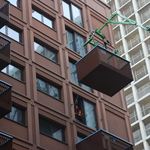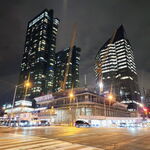Urban Sky
Senior Member
I have to admit that I wrote „grotesquely“ before I actually got the calculator out and that I was actually slightly surprised by the results (classic case of of doing some research only after you‘ve already decided what your story is!).To be fair, shaving 15 minutes off the 4h10 trip from Ottawa to Toronto is nowhere near as ambitious as achieving 3h59 to Montréal.
Ottawa-Toronto in 4h10 = 106 km/h average
Ottawa-Toronto in 3h55 = 113 km/h average
Montréal-Toronto in 3h59 = 135 km/h average.
Given that the LRC speed limit is often 10 mph (16 km/h) higher than the P+ speed limit through curves and 5 mph (8 km/h) higher on the straights, it doesn't seem unreasonable to guess that it could provide that 7 km/h increase in average speed.
It seems like a stretch to ridicule the notion of a 3h55 train from Ottawa to Toronto given that Via operated a 3h59 schedule between Ottawa and Toronto for many years (and attemped the aforementioned 3h48 schedule for one year in 2014). I think it's not inconceivable that a Venture set could achieve it westbound in the morning and eastbound in the evening (so there are no meets on the Brockville or Smiths Falls subs)
Would a higher maximum speed and higher acceleration allow a better travel time? Without traffic and with optimal dispatching: certainly! However, an increased average speed increases the speed gap to freight trains and thus excaberates the mutual interference. I therefore suspect that traveling faster just means that you still get stuck behind the same freight train and that you just catch up to it earlier, leaving little (if any) gain. That‘s why it is so hopeless to achieve attractive end-to-end travel times along the Kingston Sub (at least as long as CN controls the dispatching, which we can safely assume as an unchangeable fact!), whereas it‘s much easier to adequately serve the intermediary markets with all-stop services (thanks to their lower average speed and emphasis on end-to-end travel time)…
Last edited:




